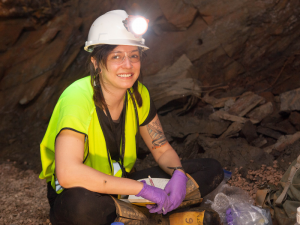Science Journalism
The goal of the Chicago Science Journalism initiative is to enhance C2ST’s online presence through its blog and to stimulate more coverage of Chicago science and technology activities. This recent collection of articles was produced in partnership with Medill Journalism, IIT, and board member and Senior Counsel at Mayer Brown LLP, Bob Kriss. Happy Reading!
Read the rest of our blog posts here.
Related Content
Brains of ‘SuperAgers’ hold secrets to long, mentally agile lives

By Colleen Zewe
What is the secret to a long life with undiminished mental agility? Researchers in Northwestern University’s SuperAger project aim to discover the clues by looking at those who have aged with a sharp mind.
SuperAgers are people over age 80 who have memory performance at least as good as those in their 50’s and 60’s. The memory performance of SuperAgers never ceases to surprise the study’s lead author Dr. Emily Rogalski.
“We didn’t necessarily suspect that SuperAgers’ brains would look more like 50-year-olds than 80-year-olds,” said Rogalski, an associate professor of Psychiatry and Behavioral Sciences at Northwestern University’s Feinberg School of Medicine. “That’s pretty profound, right? To think that you’ve lived 80 years of life, but yet your brain looks like a 50-year-old brain. That’s kind of a dream come true that your brain looks that much younger.”
Continue reading “Brains of ‘SuperAgers’ hold secrets to long, mentally agile lives”
Wearable and Implantable Electronic Devices to Monitor Health and Treat Disease – CHICAGO’S NEW SILICON PRAIRIE
Imagine waking up every morning and having a device that greets you with a report on the quality of your sleep, a summary of your key health indicators, and a schedule of suggested exercises for the day tailored to your age, health and personal goals. Although a device with features like this might sound like science fiction, Professor John A. Rogers and his research team at Northwestern University are working to make this vision a reality.
Who Is John A. Rogers?
Dr. John A. Rogers is Professor of Materials Science and Engineering, Biomedical Engineering, and Neurological Surgery at Northwestern University. He is a leading materials science researcher creating “flexible organic electronics” that can be applied to the skin or implanted inside the human body. Some of these electronic devices will provide a steady stream of health information to patients and their doctors. Other devices will administer electrical therapy to injured parts of the body, for example, to stimulate repair of damaged nerves in spinal cords.
Rogers grew up in a science-focused family. His father has a Ph.D. in physics, and his mother is a poet whose poetry explores science and nature. As a sophomore in high school, his interest in chemistry was piqued by a homework assignment requiring students to write a one-page summary on each of the elements of the periodic table. Rogers was fascinated by the fact that elements having such different characteristics were all composed of the same three fundamental building blocks: protons, neutrons and electrons. All that varied were the number and configuration of these building blocks in each element. Rogers’s work today focuses on how the number and configuration of atoms and molecules affect the properties of materials whether the materials can be effectively and safely applied to, or implanted inside, the human body.
The Future of Medical Treatment is in Your Toilet

By Alexis Shanes
Microorganisms hiding in your toilet water could lead to a revolution in medical diagnosis and treatment, scientists say.
University of Chicago microbiologists Jack Gilbert and Savas Tay, co-founders of the medical startup BiomeSense, have developed a tool to gain medical insight from powerful bacteria in the gut.
Nine months after creating the company, Gilbert, Tay and their development team have made the concept of a microbiome measurement device a reality.
“We monitor your poop in a way that’s relevant to clinical trials,” Gilbert said. “We are finding out the next strategies for making people healthy.”
Continue reading “The Future of Medical Treatment is in Your Toilet”
Subsurface biofilms could hold clues to alien life, astrobiologists say
By Lauren Robinson
Are we alone?
If you’re wandering around the chambers of the Deep Mine Microbial Observatory, what was once a gold mine in South Dakota, it might feel as though you are — until, perhaps, you take a fluid sample from a borehole in the tunnel wall, run it under a microscope and observe one of the droplets teeming with microbial life.
Caitlin Casar, a third-year Ph.D. student at Northwestern University, says scientists can’t yet answer the big question: Are we alone in the universe?
“I hope that there is life on another planet, but whether or not it’s probable, I don’t think anybody can really say,” she said.

Continue reading “Subsurface biofilms could hold clues to alien life, astrobiologists say”